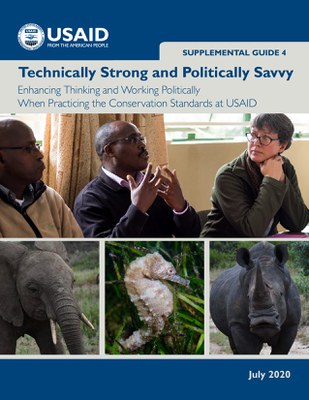Supplemental Guide 4: Technically Strong and Politically Savvy - Enhancing Thinking and Working Politically When Practicing the Conservation Standards at USAID

Thinking and Working Politically (TWP) is an approach to international development that brings greater attunement to the political dynamics of the local programming context in order to enhance development results. Given strong evidence that political factors overwhelmingly drive the loss of biodiversity, this guide is based on the premise that conservation programs will be more effective when they skillfully integrate TWP.
The theory of change for this supplemental guide is that offering an explicit vision for enhancing TWP in the practice of the Conservation Standards at USAID will strengthen dialogues and experimentation that will ultimately bring these practices together more effectively and systematically. It unpacks areas of alignment and divergence between the Conservation Standards and TWP as they are practiced at USAID, and it offers recommendations for drawing on the strengths of both approaches to enhance biodiversity programming.
The primary audiences for this guide are USAID staff and implementers who facilitate practices from the Conservation Standards. It also serves as a resource for USAID’s partners as they develop proposals, lead programs, and craft approaches to collaboration, learning, and adapting (CLA). Conservation practitioners from other organizations may also find the guide of interest as they wrestle with similar issues and challenges. The guide is the results of significant, iterative inputs from a large number of contributors and is envisioned as a 1.0 version. We invite and encourage your feedback.








